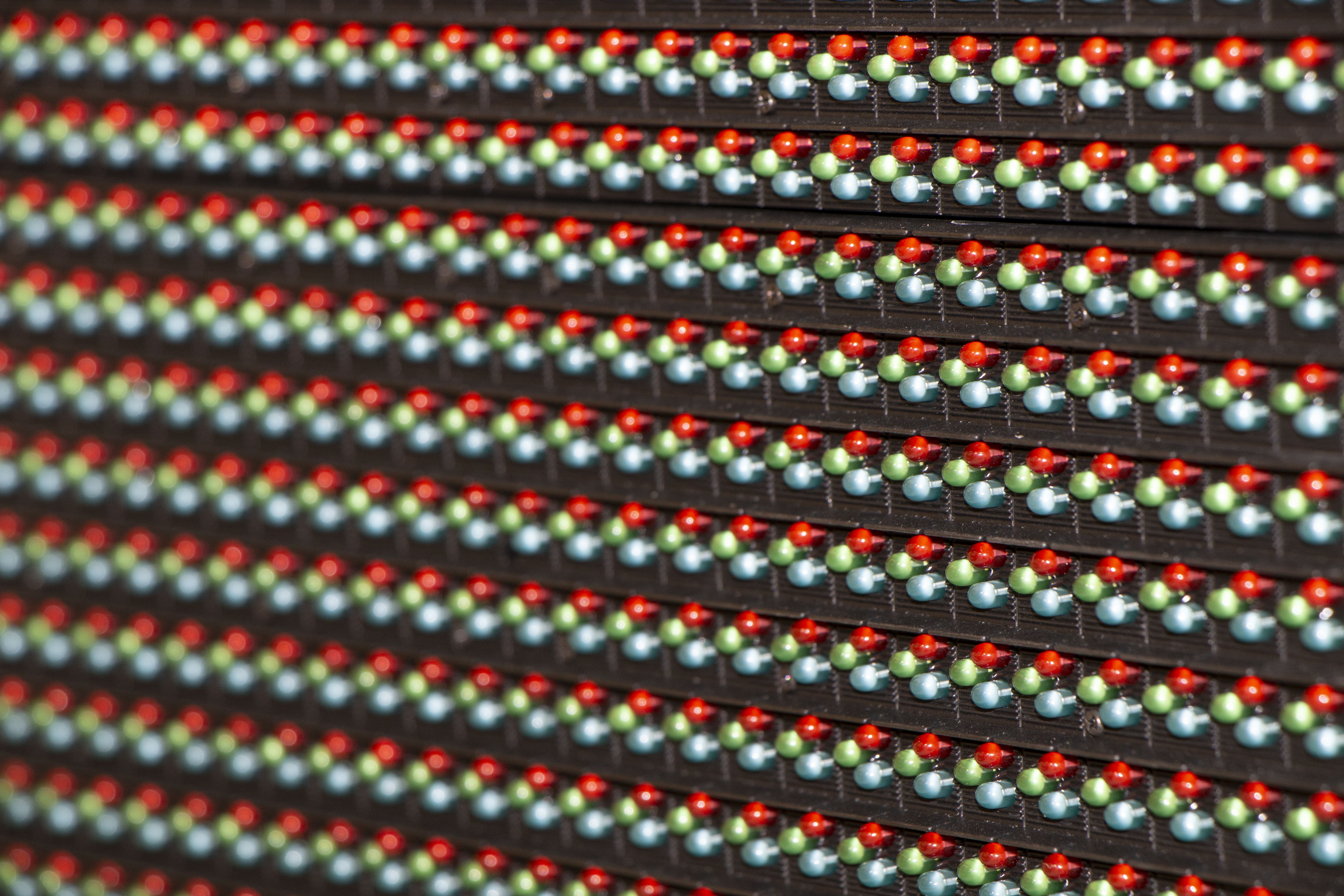Millions of pixels, as well as hundreds of thousands of components, chips, circuits, wires, and boards—the complexity of dvLED displays can be staggering. When looking at a display, most viewers do not consider just how many components are working in tandem to create the content they are enjoying. As an LED buyer, however, there are dangers to ignoring these details when placing an order for your venue.
[Above It All: A dvLED Ceiling Display]
Almost every component that is produced to create a final dvLED display is manufactured in batches to preserve the color reproduction as each component is placed side-by-side in a finished display. When dvLED diodes (the RGB component of display that actually produces color) are manufactured, they are produced of natural crystal substrate, plastics, and epoxies that vary the color output properties of each individual diode.

Generally, batching occurs by testing each individual pixel (in the case of standard SMDs) to determine its variance +/- from what is determined to be “color 0.” A single manufacturing run of diodes may contain billions of individual diodes that ultimately are sorted (or batched) into hundreds of different bins based on the +/- tolerance specified by the manufacturer.
All About Accuracy
Batch matching doesn’t just occur with diodes—it also takes place in the many other components that are used to create a final display. IC drivers, PCB components, plastics, and even the finish coatings on cabinets themselves all are produced in batches to ensure a consistent performance or appearance.
As you can imagine, when many dvLED panels are placed side-by-side in a completed display, each module or cabinet must look like the ones surrounding it in order for the image to be accurate. If one cabinet has a slightly different hue, color temperature, brightness, etc., the effect of the overall display will be diminished. By batch matching the components at the time of manufacturing, these types of concerns are unnecessary.
[Why dvLED Is Gaining Market Share]
When purchasing a dvLED display, it is important to place an order of all same-batched materials. This should also include many overlooked components and spare parts, from spare diodes to plastic masks, to ensure that even future repairs use the same batched materials.
When purchasing a dvLED display, it is important to place an order of all same-batched materials.
Once a display has been manufactured and purchased, additional panels are typically not able to be reproduced that match the existing display, unless the purchase was part of a larger batch and the manufacturer has additional panels of the same batch. Factors such as runtime, UV exposure, manufacturing materials, etc., also play a factor in the final output of both displays and whether they will match.
What About Calibration?
In order to have a display that meets not only immediate needs but also is future proof, the following factors should be considered.
• Know what tolerances to expect from your manufacturer if you question the quality and/or price of a specific display. Some manufacturers will cut costs by using batched diodes that have a very wide spread of variance that—even after calibration—may not be satisfactory.
• Always ask for same-batch items such as plastic masks, etc., to ensure that even when the display is off, there aren’t variances in the plastics used on the front of the display (which can cause an unsightly patchwork of black plastics).
• Other than the display you originally spec, know if you would like to expand that display in the future—and, if so, how you plan to expand it with the same batch product. Discuss with the manufacturer for the best strategy.
[Digital Signage: The Future Is Bright]
If you absolutely find yourself in a situation where you have no other option but to add to a display with unbatched product, strategize for the best placement of the new panels. Placing them all on one side of the display, or in a single row or column, can alleviate the overall effect of different color properties—instead of placing them randomly in a patchwork throughout the display.
When in doubt, always discuss your current and future display needs with your manufacturer, and always use a trusted source for manufacturing or procurement. When using the right batches and components, your dvLED display will last for years, producing the same great image quality from Day 1 to Day 3,000.

